Have you ever been amazed at the beauty of the aspen and birch trees that surround the hills? And they compel you to go riding and marvel at nature.
Besides aesthetic beauty, use aspen and birch trees for an array of benefits.
You will be updated here regarding all about the aspen and birch trees:
- Physical characteristics.
- Uses.
- And the distinction between the two.
Aspen Vs Birch: Physical Characteristics
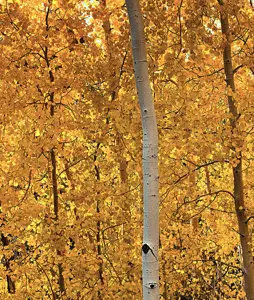
Aspen is a deciduous tree that is light, strong, and hardwood and belongs to the Salicaceae family. That is a fine-grained wood containing knots on its surface.
You can recognize the Aspen tree from a far distance because of the loud sound created by quivering and shaking leaves. That’s the reason for their common name of quaking aspen.
Butterflies, beavers, deers, rabbits, and other herbivores feed on the aspen bark, which shows its importance for wildlife.

Birch is a narrow-leaved hardwood of the Betulaceae family known for its variety of uses, such as veneer, pulpwood, furniture, etc.
Birch is known as paper birch as its cracking layers can be easily stripped and taken off.
You may misunderstand both different trees owing to their similar appearance: tall and thin, with white bark and shaded leaves.
1. Aspen Bark Vs Birch Bark
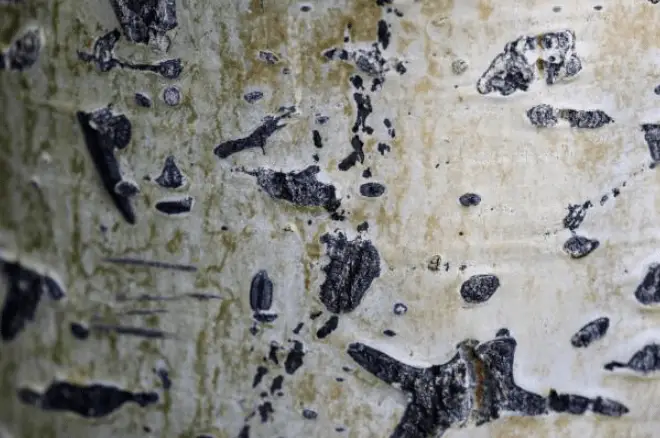
The Aspen tree has the nearest white bark with a green tint, black parallel marks, and black knots. The smooth bark of a budding aspen tree turns coarse to adjust with the tree’s growth. The eye-like marks on its surface are the unique recognition of it.
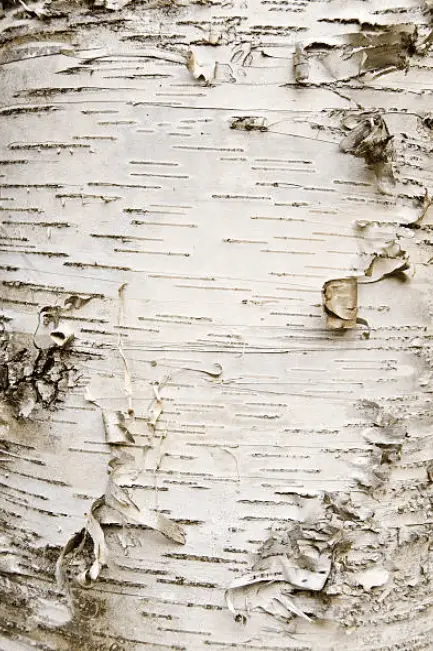
Birch also has parallel marks with the absence of eye-like wounds. The upper layers of birch can be easily peeled off. The fungus is located while peeling the birch bark. Straight grains with fascinating pattern makes them the first choice for furniture. However, it is prone to crack and warp.
2. Aspen Leaves Vs Birch Leaves
The Aspen tree has heart-shaped broader leaves with jagged edges.
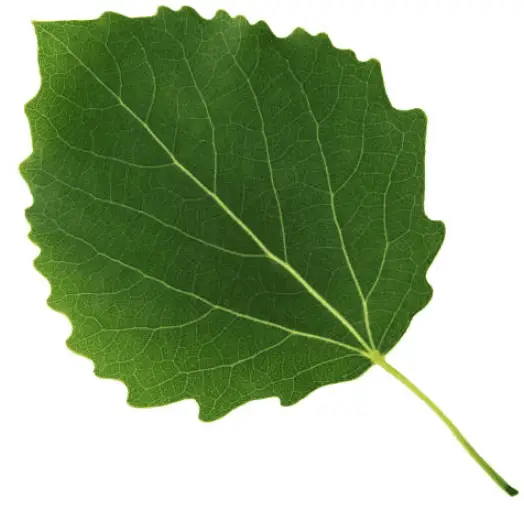
And Birch has oval-shaped leaves with narrow tips and plain edges. It has shorter green-shaded leaves than Aspen.
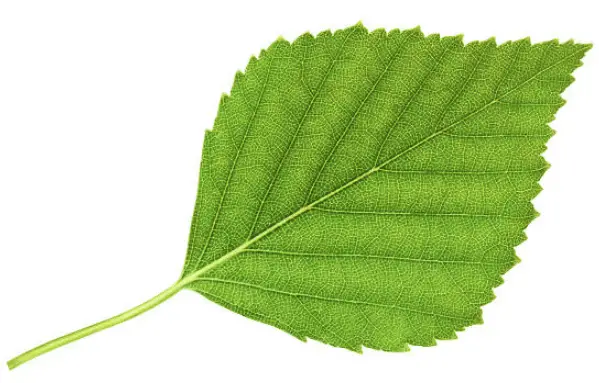
They have a sparking yellow color with a red tint when their leaves fall away.
3. Aspen Branches Vs Birch Branches
At the lower base of the Aspen trees are breakable branches and thick branches on the upper side of the tree. Its branches, by and large, are used for decoration.
Strong branches of Birch trees are a good choice for home decor and indoor and outdoor displays.
Foot poles and picture frames from birch branches are preferred for festival decorations like Christmas.
5. Aspen Flowers Vs Birch Flowers
The birch tree has a bunch of flowers at a single site. These flowers blossom earlier than leaves in spring. Birch’s catkins are slim, and the togetherness of different flowers leads to self-pollination. Gender can be any of Birch catkins.
Aspen trees’ catkins also grow in spring. Their catkins have a sturdy shape. A single gender of flowers is present on aspen trees which causes cross-pollination.
6. Aspen Buds Vs Birch Buds
Birch buds are cone-shaped and purple with a red tint. They mature over a long time with a length of four millimeters.
Aspen has reddish-brown colored buds with cones in shape. Bud scars grow on all sides of the stem and branches.
Where To Find Aspen & Birch Trees: A Guide To Their Distribution
Where are Aspen and Birch trees native?
Birch trees are native to the Northern area of North America and found in a specific range in the eastern and northern areas of the USA and Canada. Birch tree species are found globally in floodplains and wet lowland forests. Around 60 species of birch trees vary from small to mid-sized trees.
Aspen trees are native to North America’s cool regions and are available in ample areas across the USA and Canada.
Aspen trees are abundant in rocky hills and grow following snow slides, burns, and other disruptions. They belong to deciduous trees with medium sizes 50 to 100 ft is the length of aspen trees.
Climate Preferences
Birch grows in dry areas with sandy soil. Birch trees nourish in cool climates.
Cold winters are the best climate to grow Aspen, which can not flourish in harsh hot summers.
Aspen Vs Birch: Comparison of Various Properties
1. Appearance
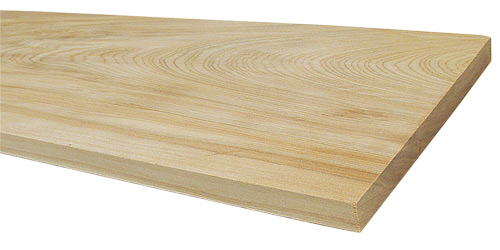
The birch surface has reddish-brown wood with the white color of its Sapwood. The even look of the Birch is impressive.
The Aspen surface is close to white in color with light brown shades.
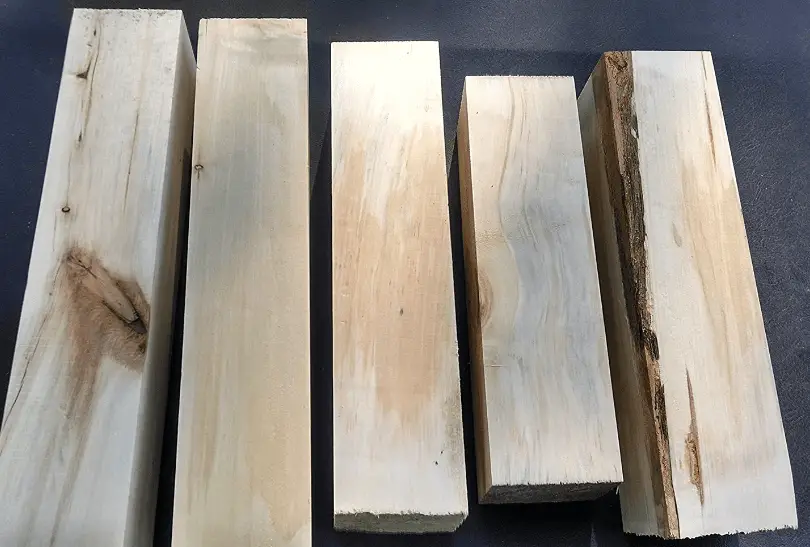
And sapwood color is a pale yellow to white. The robustness and durability of wood make it absolute for wood-related uses like furniture.
2. Workability
You can easily stain and paint the light shades of Birchwood.
Finish, glue, and sand it easily.
The negative aspect is the wild grain of the wood can wear while using the machine over it.
Effortless to work with Aspen through tools, machines, and handwork.
However, it is an extremely soft wood that does not have grasp power for screws and nails. And chances of wood shrinkage due to its low density.
3. Cost
Aspen is unique and expensive wood, whereas birch wood is affordable.
4. Burnable
Aspen trees are not burnable, which is the reason matches are prepared from this wood.
Birch is a first-rated firewood and combustible wood.
4. Rot-Resistance
Both Aspen and Birch do not have rot resistance. And they are Liable to insects attack, decay, and rot. These facts state the unsuitability of these wood for outdoor projects.
However, you can use both types of wood by treating them with chemicals.
What are The Uses of Aspen & Birch Wood?
A range of uses for Aspen and Birch trees, from medicinal purposes to furniture. Birch is a medicinal solution to the problems of kidney stones and joint aches.
Aspen offers medicinal solutions for nerve and joint suffering and prostate and bladder matters.
Uses of Aspen Wood
1. For Indoor & Outdoor Furniture
Aspen is a fantastic choice for indoor and outdoor furniture because of its rustic appearance and longevity. It grabs paints and stains well and deters weathering. Finish the Aspen wood to use it for exterior purposes.
2. Food Containers
The wood is highly recommendable for food containers since it does not emit unfavorable chemicals, and it is odorless wood.
3. Inflammable wood
Matches are made from less combustible Aspen wood that burns for a prolonged time.
4. For Medicinal Purposes
Aspen bark and leaves are used for medicinal intentions, such as to cure nerve pain and rheumatoid arthritis (RA).
5. Parcel Boxes & Other Small Materials
Pulp is created from Aspen wood to make boxes and papers.
The lightweight and durable Aspen wood are chosen for other usable small materials.
Uses of Birch Wood
A range of uses of Birchwood is from the creation of interior trim and canoes to veneer. The waterproof properties of Birch make it suitable for the mentioned projects.
1. Furniture
You can use Birchwood in all interior wood projects because of its durability and aesthetic beauty.
Being pocket-friendly is another benefit of wood.
However, it is not recommended for exterior furniture since it does not have rot-resistant properties.
2. Boxes & Crates
All Birch wood species are used for creating different portable boxes and crates, which sustain for the long term due to the wood’s strength.
3. Plywood Sheets
Birchwood is a superb source for creating Plywood and veneer sheets.
The lightweight Birchwood is preferred to make thin layers of veneer sheets.
4. Decor Projects
Birch is easy to carve and work. That is used for decorative wood materials, toy parts, and toothpicks.
Winding Up
The major similarity between Aspen and Birch trees is their appearance when they both fall their leaves off. Both types of wood are excellent for interior projects like furniture and home decor.
However, Aspen wood is more expensive than Birch. Additionally, Birch has higher flammability and durability than Aspen.
Ensure the suitability of the wood before you purchase it for your project. Never use both planks of wood for outdoor purposes without staining.
